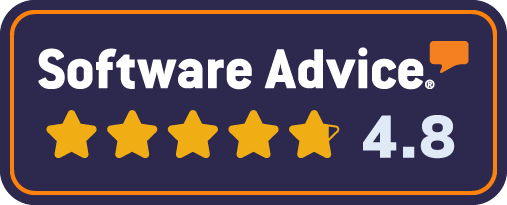 An organization’s sales and marketing teams tend to be at odds with one another.
An organization’s sales and marketing teams tend to be at odds with one another.
Theoretically, the two should work seamlessly together: one is charged with generating and handing off the leads, while the other is responsible with securing and converting those leads into a customer.
So then why are so many organizations losing out on countless leads that could turn into potential sales?
Sales team and marketing teams should be coordinating their lead strategy day in and day out, yet they still experience drastic lapses in missed sales. For the most part, they’re not even aware of how much these lost leads and opportunities are costing their organization. A recent study by Forbes noted that an estimated 71% of an organization’s internet leads are wasted! Their findings noted that the biggest reason for this high lead-loss statistic was due to the delay in response. Furthermore, our research indicates that during the marketing-to-sales handoff, 55% of leads are lost and result in time and money wasted.
Simply put, just because your marketing team generates and gathers the leads doesn’t mean they will be a “lay up” for your sales team to capitalize upon and close.
In this article, we’ll show you how the sales/marketing relationship is changing, the cutting-edge ways savvy sales professionals are utilizing marketing to boost their results, examples of those results in the real world, and the strategies you can adopt now to see the same results in your organization.
Forward Thinking Sales-To-Marketing Alignment
We get it, as a sales professional, you get many leads from your marketing team. At times it can be frustrating to get so many leads because it’s hard to decipher which leads to pursue. Of course, time is money and with inefficient lead processing you are losing out on opportunities.
What are forward thinking sales professionals doing differently?
These sales gurus are aligning their efforts to work with their marketing team rather than against or in isolation. As mentioned above, one of the most important facets of the sales to marketing alignment isn’t always if the lead is “good” or not but how quickly it is responded to. In fact, you are 3X more likely to convert a lead if you incorporate a smart cadence (instant response + strategic follow-up). This can be a huge opportunity for your organization. The 2018 State of Inbound Marketing Survey conducted by Hubspot found that 1 in 4 organizations noted that their sales and marketing efforts were “misaligned” or “rarely aligned.” Furthermore, that misalignment is costing organization 10% or more in revenue loss annually.
If your organization is “misaligning” sales and marketing efforts, how can you expect that you’ll be able to respond to the lead first? Plain and simple – you can’t.
Let’s take a look at how your sales efforts can benefit from sales-to-marketing alignment.
How Sales Can Benefit From Marketing
When your sales and marketing efforts are properly aligned, your organization will experience increases in revenue. This idea was highlighted by the Harvard Business Review,
“[…] There is no question that, when Sales and Marketing work well together, companies see substantial improvement on important performance metrics: Sales cycles are shorter, market-entry costs go down, and the cost of sales is lower.”
Here are some specific ways marketing can better support sales and thereby align the two groups:
Content Marketing collateral
B2B marketers are creating more content than ever in order to get information pertaining to their product or service out in front of potential leads. Once a reader becomes a lead, however, that content strategy disintegrates.
Once a reader/visitor becomes a lead (through landing page conversion etc), the content strategy is generally abandoned for a sales-specific approach. Often times, a lead can feel “duped” or misguided when this clunky handoff takes place.
Much of the strategy behind the content is to inform and educate; however, this becomes lost in the handoff. As a better alternative, many sales professionals remain in the educator role before becoming the “pushy” salesman. Organizations with a tightly integrated sales and marketing operations experienced a 24% increase in growth and a 27% increase in profit growth over a 3 year period.
Follow up cadence messaging and automation
As referenced above, it’s important to respond to a lead instantly. Forward-thinking sales professionals are integrating automated response technology into the marketing-to-sales handoff in order to experience the higher conversion rate associated with doing so.
There is technology in the marketplace that responds to leads instantaneously, in the preferred manner of the lead.
What do we mean by this?
Well, have you ever taken into account how your leads prefer being contacted?
- Do they prefer email correspondence?
- Do they prefer SMS?
- Do they prefer a phone call?
The Messaging Consumer Survey Report notes that consumers in India, South Korea, Singapore and the United States prefer SMS over voice calls for their customer service needs. Progressive sales professionals know and understand this, and they’re now integrating it into their follow up efforts.
Proper lead qualification
There’s a difference between a marketing qualified lead and a sales qualified lead.
A marketing qualified lead is someone who is looking for brand awareness or education on a specific product or service (a lead closer to the top of the sales funnel).
A sales qualified lead is someone who has decided they are going to purchase and need to choose which business to give their sales (a lead near the bottom of the sales funnel).

Dynamic sales executives have different ways of implementing a lead scoring system into their organization. That way, they know which leads are ready for instant response and which might be higher up in the funnel. Every organization’s lead scoring will look different but here are some of the highlighted variables:
- Demographic information
- Company information
- Online behavior
- Email engagement
- Social engagement
- Spam detection
When you can score your leads, you open yourself up to focusing resources on the more valuable leads your marketing team handed over. In fact, a study conducted by Marketing Sherpa study showed organizations using lead scoring had a 77% boost in lead generation ROI over those not using scoring.
Your Sales and Marketing ROI increases when you align
Sales professionals who strive to align with their marketing compatriots experience higher ROI. In fact, Marketo notes that sales and marketing alignment can help organizations become 67% better at closing deals. That’s a drastic supercharge to your sales force’s efforts.
What was once two different elements of an organization working in isolation (though thinking they were working in unison) is drastically changing. Sales leaders that take it upon themselves to use tools that allow them to qualify the leads that come their way are experiences in overall sales conversions as well as revenue for them and their organization.
Sales and marketing don’t need to point fingers any longer as to who is responsible for the lost sales. They need to align and watch their ROI soar beyond what they thought was possible.


